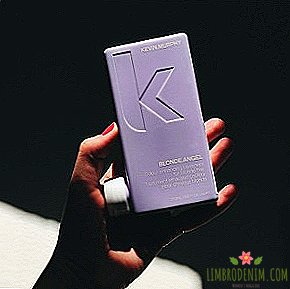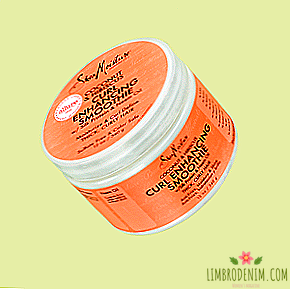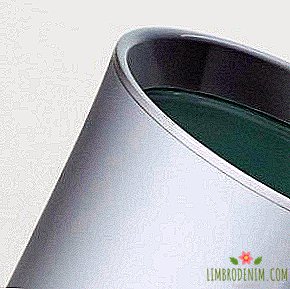Microplastic and other ingredients: How cosmetics pollute the planet

margarita virova
Using cosmetics, we actively pollute the environment - this is not news, but in the past few years, scientists have sounded the alarm. Recent studies by experts from the United States have shown that products from hydrocarbons are involved in air pollution no less noticeably than automobile exhausts and cigarette smoke, and habitual glitter, according to a scientist from New Zealand, is dangerous to oceanic fauna. We do not call for immediately throwing all the tubes from your shelf in the bathroom, but knowledge of how we invest in environmental issues will help make daily care safer for nature. We talk about the main sources of pollution that inhabit our favorite banks.

Packages and packages
As we said last week, with the disposal of cosmetic packaging everything is very difficult: they can consist of different types of plastic, metal and glass, while not all elements are recyclable, and the option "carry back to the store" is available only in some brands - they can be counted on the fingers. Another bad habit inherent to brands and chain stores is to pack even the smallest purchases like a lip liner in cellophane and paper bags of various calibers (and also let's not forget about cardboard packaging and protective films).
It will be difficult to relinquish this domination of uselessly spent paper and plastic, but you can also walk around with cosmetics with a beautiful shopping bag, and empty suitable cans to put in a box and periodically take them to processing points.
Oil products
Another well-known source of pollution is oil and oil products, which are used literally everywhere and for a variety of purposes, including in the production of cosmetics. Petroleum products also have varying degrees of toxicity: it depends on their hydrocarbon composition - the most severe of them can damage human health.
And yet, almost all hydrocarbon components, even those that are safe to put into your favorite cream with pleasure, add environmental problems: they tend to accumulate in water and soil, disrupting the normal functioning of the environment and microorganisms. They love petroleum products for a low price, their ability to remain unchanged for a long time and a predictable effect on the skin - various methods of processing produce petroleum jelly, salicylic acid, mineral oil, paraffin. Abandoning them completely, however, is not so difficult: many organic brands bypass the hydrocarbon components side - the main thing is that you should not have allergies on the "natural" ingredients.

Glitter
Glitter is one of the types of microplastics, which several years ago (and once again - at the beginning of the current year) was declared a serious threat to the purity of nature. These particles are found in the ocean, in the stomachs of marine fish, and also in tap water — the cycle of pollution closes very quickly. Glitter is made from aluminum and polyethylene terephthalate, which simply does not decompose and continues to travel through water.
The fashion for glitter only contributes to the scale of the problem: today it is possible to find them not only in decorative cosmetics, but also in hair products, masks, scrubs and even sanskrinahs - this is the easiest way to make a product attractive to a modern customer. Biodegradable glitter on the basis of producing brands Eco Glitter Fun and Bio-glitter - not yet popular, but not bad demonstrating the availability of alternatives.
UV filters
We cannot stop using Sanskrins, but not everything is so simple with them - they began to investigate their impact on the environment because of the wide prevalence of products that get into the water in an understandable way, washing off the bodies of millions of bathers. Organic filters are subject to photodegradation, but, remaining in the water in the pool, can react with the chlorine present in it, forming potentially hazardous substances. Inorganic filters in chlorinated water also break down into toxic substances - scientists from Moscow State University have found such properties in popular avobenzon.
Whether scientists remain compounds that are formed after the collapse of organic filters in the aquatic environment, scientists have yet to figure out. As for inorganic filters, they decompose more difficult - which means they manage to enter into many reactions with microorganisms and plants: on some popular beaches, the death or change in the composition of the phytoplankton living on the coast is predicted. What to do with this is still absolutely incomprehensible - however, for starters, it is worth waiting for the first large-scale studies with clear conclusions.

Microplastic
In 2015, a detailed report was published under the UN Environment Program on how various types of plastic are used in cosmetics and how it is dangerous for the environment - there is material primarily in scrubs and peels (the very balls that are responsible for the abrasive effect ), but often these components are in shampoos, deodorants, decorative cosmetics.
In a number of countries and some states in the United States, the sale of cosmetics, which contain non-degradable polymer particles, has already been banned, but these regions are still in the minority. In addition, the document prepared by the UN takes into account only solid compounds that accumulate in water and soils, while research on liquid polymer compounds and their possible toxicity is ongoing.
It is possible to find a list of components that are clearly unhealthy for the nature on almost any website dedicated to environmental issues (for example, here) - and make sure that they are used quite often and for different purposes. A reasonable way out is to read the compositions and minimize the consumption of at least those means in which the “microparticles” obviously exist. In Russia, the question of banning or regulating the production of cosmetics and household chemicals with microplastic content has not yet been raised.
Preservatives
The well-known parabens are the most well-studied synthetic preservatives, which in low concentrations are not harmful to human health, and most importantly, are reliable. Parabens are also found in nature, synthesized by some species of plants and bacteria, but those used in our cosmetics have an exclusively synthetic origin.
Questions to parabens and similar substances, however, are among environmental scientists: flushing from our faces and bodies and getting into sewage, they still remain preservatives, substances that prevent the processes of decay - and therefore, falling into the aquatic environment and the soil in large quantities, can interfere with the processes of vital activity of microorganisms and regular chemical reactions. Stamps bearing the banner of environmental responsibility, propose to move to natural preservatives - but this idea is likely to work poorly with complex and unstable compositions.
Other pollution sources
Sites dedicated to organic cosmetics, like to blame many substances in toxicity for nature and for humans - but it is worth checking this information. For example, silicones, like many other compounds, are not really biodegradable - but this means, first of all, that they are not processed by microorganisms, but they undergo other types of decay. And the most dangerous pollution in the end are volatile compounds: in this form, and silicone loses its relative harmlessness.
Another vivid example is the evaporation of formaldehyde, which is still not banned for use in the process of keratin straightening, and after the procedure evaporates under the influence of temperature. The main discovery in the above news about hydrocarbon contamination was that the concentration of toxic substances in the air in homes is often higher than street exposure - the harm from cosmetic emissions is not exaggerated, and most likely in the coming years we will learn a lot about the interaction of our lotions and shampoos and the environment.
Photo: New Africa - stock.adobe.com, constantinos - stock.adobe.com, springtime78 - stock.adobe.com




